Hanging Chinese evergreen, a popular houseplant known for its air-purifying qualities and elegant appearance, offers a touch of nature to any indoor space. This versatile plant thrives in a variety of environments, making it an ideal choice for both novice and experienced gardeners.
Whether you’re looking to add a touch of greenery to your living room, create a lush hanging garden, or simply purify the air in your home, the hanging Chinese evergreen is an excellent option. With its easy-care nature and stunning foliage, this plant is sure to impress.
Plant Care Guide

The hanging Chinese evergreen ( Aglaonema) is a popular houseplant known for its attractive foliage and ease of care. To ensure optimal growth and health, follow these care guidelines:
Watering
Water the plant thoroughly when the top 1-2 inches of soil feel dry to the touch. Avoid overwatering, as soggy soil can lead to root rot. During the winter months, reduce watering frequency to prevent overwatering.
Fertilizing
Fertilize the plant monthly during the growing season (spring and summer) with a balanced liquid fertilizer. Dilute the fertilizer according to the manufacturer’s instructions and apply it to the soil. Do not fertilize during the winter months.
Light Requirements
The hanging Chinese evergreen prefers bright, indirect light. It can tolerate low light conditions, but the foliage may become less vibrant. Avoid placing the plant in direct sunlight, as this can scorch the leaves.
Common Problems
Some common problems that can arise when caring for a hanging Chinese evergreen include:
- Yellowing leaves:Overwatering, nutrient deficiency, or low light levels can cause yellowing leaves.
- Brown leaf tips:Underwatering, low humidity, or excessive fertilizer can cause brown leaf tips.
- Drooping leaves:Overwatering or underwatering can cause drooping leaves.
Care Summary Table
| Care Aspect | Recommended Guidelines |
|---|---|
| Watering | Water when top 1-2 inches of soil are dry. Reduce watering in winter. |
| Fertilizing | Fertilize monthly during growing season with balanced liquid fertilizer. |
| Light Requirements | Bright, indirect light; avoid direct sunlight. |
Propagation Methods
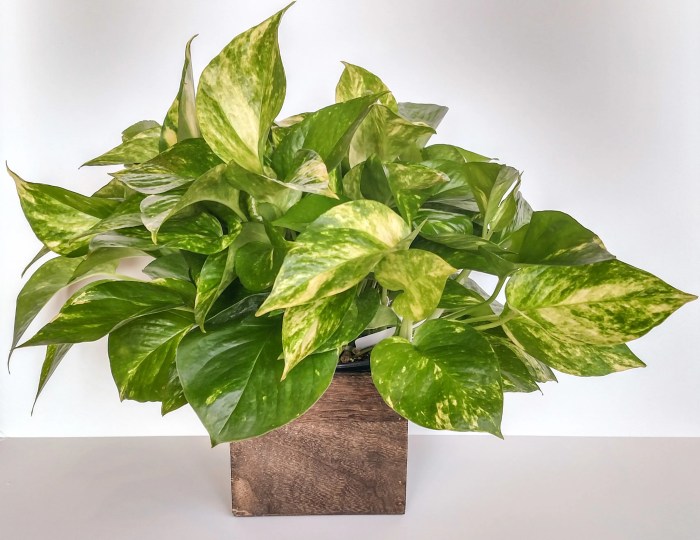
Propagating hanging Chinese evergreen is a straightforward process that can be done using various methods, including stem cuttings, air layering, and division. Each method has its advantages and is suitable for different situations.
The ideal time to propagate hanging Chinese evergreen is during the growing season, which typically runs from spring to early fall. This is when the plants are actively growing and have the best chance of rooting successfully.
Hanging Chinese Evergreen is a popular choice for indoor hanging plants due to its trailing stems and variegated foliage. Like the Chinese Evergreen, many other plants make great hanging plants indoors. Explore great hanging plants indoor to discover a wide variety of options that can add a touch of greenery and life to your home.
The Hanging Chinese Evergreen remains a top pick, with its ability to tolerate low light and its easy maintenance, making it a great choice for beginners.
Stem Cuttings
Stem cuttings are the most common method of propagating hanging Chinese evergreen. To take a stem cutting, use a sharp knife or pruning shears to cut a 4- to 6-inch stem from a healthy plant. Remove the leaves from the bottom 2 inches of the stem, then dip the end of the cutting in rooting hormone.
Plant the cutting in a pot filled with moist potting mix. Keep the soil moist but not soggy, and place the pot in a warm, bright location. The cutting should root within 4 to 6 weeks.
Air Layering
Air layering is a method of propagation that involves rooting a stem while it is still attached to the parent plant. To air layer a hanging Chinese evergreen, make a small cut in the stem of the plant, about 6 inches from the tip.
Insert a small piece of wood or plastic into the cut to keep it open.
The hanging Chinese evergreen, known for its trailing habit and air-purifying abilities, is a popular choice for indoor gardeners. For those seeking other fast-growing trailing plants to complement their indoor decor, fast growing trailing plants indoor offers a comprehensive guide to a wide variety of options.
With their ability to cascade down shelves, spill over containers, or create lush curtains, these plants add a touch of greenery and vitality to any space. The hanging Chinese evergreen remains a versatile and easy-care choice, making it an excellent addition to any collection of indoor trailing plants.
Wrap the cut area with moist sphagnum moss and secure it with plastic wrap. Keep the sphagnum moss moist, and within 4 to 6 weeks, roots should form around the cut. Once the roots are established, cut the stem below the roots and pot the new plant.
Division
Division is a method of propagation that involves dividing an existing plant into two or more new plants. To divide a hanging Chinese evergreen, carefully remove the plant from its pot and gently separate the roots into two or more sections.
Each section should have its own roots and a few leaves.
The hanging Chinese evergreen is a popular choice for air purification, as it is known to remove toxins such as formaldehyde and benzene from the air. It is also a relatively low-maintenance plant, making it a good option for those who are new to gardening.
If you are looking for other hanging air purifying plants , there are many other options to choose from, such as the spider plant, the peace lily, and the snake plant. The hanging Chinese evergreen is a versatile plant that can be used in a variety of settings, from homes to offices to schools.
Plant the divisions in separate pots filled with moist potting mix. Keep the soil moist but not soggy, and place the pots in a warm, bright location. The divisions should root within 4 to 6 weeks.
Varieties and Cultivars
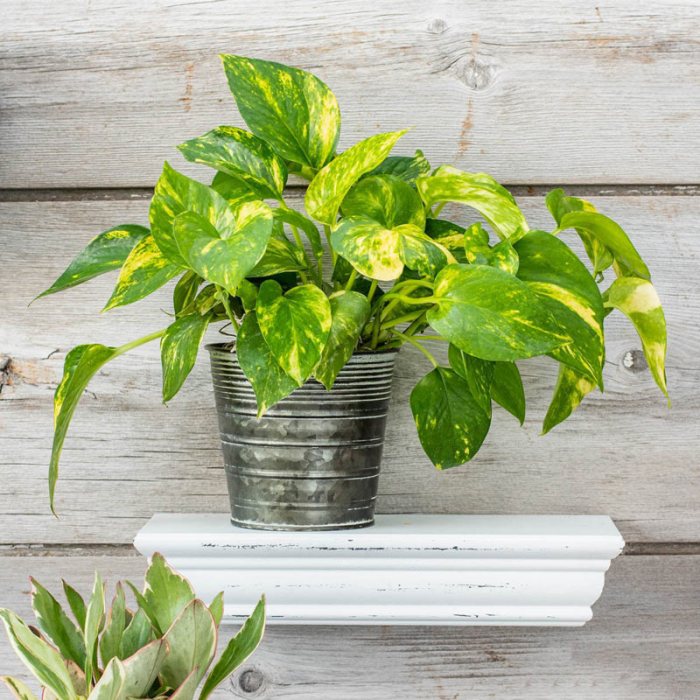
Hanging Chinese evergreen encompasses a diverse array of varieties and cultivars, each exhibiting unique characteristics and growth habits. From variegated foliage to cascading tendrils, these plants offer a captivating range of ornamental value.
The following table provides a comparative overview of some notable varieties:
| Variety | Size | Leaf Shape | Color | Image |
|---|---|---|---|---|
| ‘Tricolor’ | Trailing, up to 2 feet long | Lanceolate | Green, white, and pink variegation | [Image of ‘Tricolor’ hanging Chinese evergreen] |
| ‘Silver Falls’ | Cascading, up to 4 feet long | Linear | Silvery-green | [Image of ‘Silver Falls’ hanging Chinese evergreen] |
| ‘Emerald Gem’ | Compact, trailing up to 1 foot long | Ovate | Deep green | [Image of ‘Emerald Gem’ hanging Chinese evergreen] |
| ‘Goldilocks’ | Trailing, up to 3 feet long | Elliptical | Golden-yellow | [Image of ‘Goldilocks’ hanging Chinese evergreen] |
Interior Design Applications
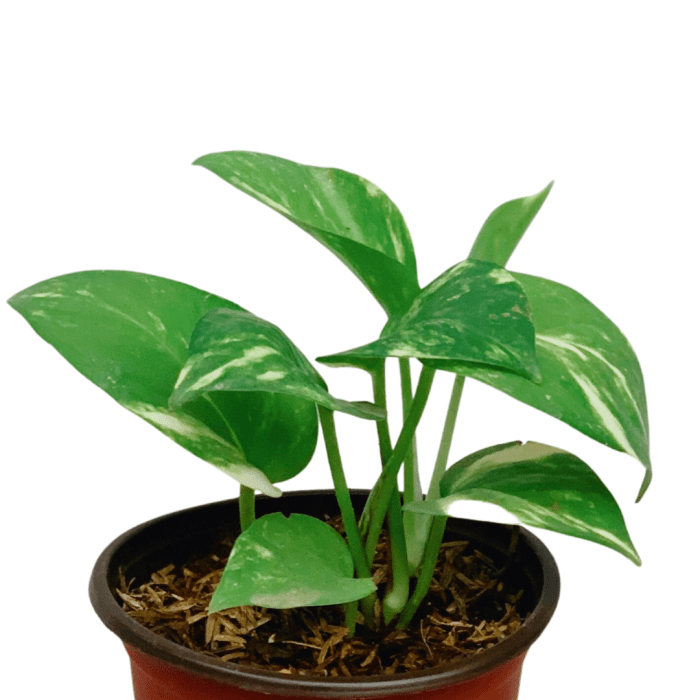
The versatile hanging Chinese evergreen offers a plethora of interior design possibilities, bringing a touch of nature and elegance to any space.
From hanging baskets suspended from ceilings to tabletop arrangements adorning shelves and tables, this plant adds a lush green accent to any room. Its adaptability extends to various decor styles, complementing both modern and traditional aesthetics.
Hanging Baskets
Hanging Chinese evergreens in baskets creates a captivating focal point, especially when multiple baskets are grouped together. The trailing vines cascade gracefully, forming a verdant tapestry that adds depth and dimension to a room. Consider using macrame or woven baskets for a bohemian touch, or opt for sleek metal or ceramic baskets for a more contemporary look.
Shelving Displays
Displaying hanging Chinese evergreens on shelves adds a touch of greenery to vertical spaces. Place the plants on floating shelves for a modern and airy feel, or incorporate them into a gallery wall arrangement for a more eclectic look. For a cohesive display, group the plants with other trailing varieties, such as pothos or spider plants.
Tabletop Arrangements
As a tabletop plant, the hanging Chinese evergreen adds a touch of elegance to desks, side tables, and windowsills. Its compact size makes it ideal for small spaces, while its trailing vines create a sense of movement and interest. Use decorative pots or planters to complement the plant’s lush foliage, choosing colors and textures that match the room’s decor.
Benefits and Symbolism
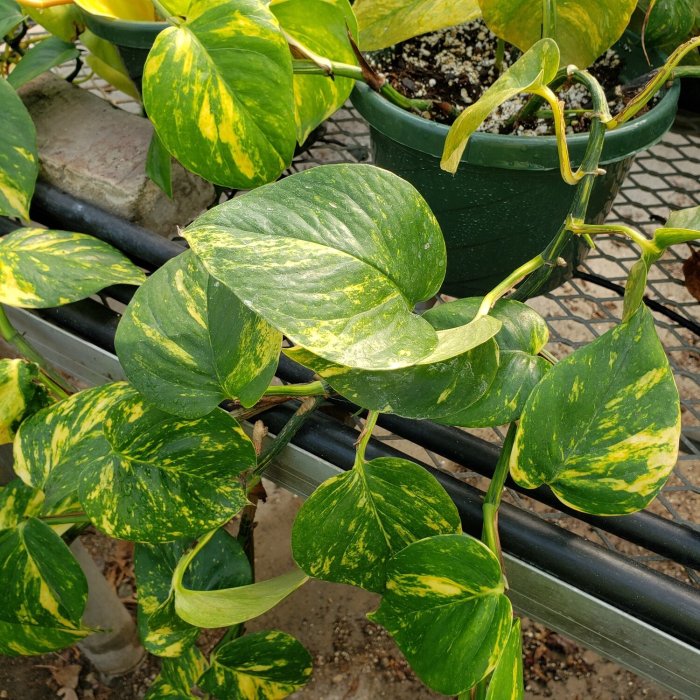
The hanging Chinese evergreen is not only an aesthetically pleasing plant but also offers numerous benefits and holds cultural significance. Its ability to purify the air and its low-maintenance nature make it a popular choice for indoor environments.
In traditional Chinese culture, the hanging Chinese evergreen symbolizes prosperity, longevity, and good fortune. It is often used in feng shui practices to enhance the flow of positive energy and create a harmonious environment.
Air-Purifying Qualities
The hanging Chinese evergreen is known for its ability to remove harmful toxins from the air. Studies have shown that it can effectively reduce levels of benzene, formaldehyde, and trichloroethylene, which are common pollutants found in indoor environments.
Low-Maintenance Nature
The hanging Chinese evergreen is a low-maintenance plant that is easy to care for. It can tolerate a wide range of light conditions, from low to bright indirect light, and requires only moderate watering. This makes it an ideal choice for busy individuals or those who do not have a lot of time to dedicate to plant care.
Cultural Significance and Symbolism
The hanging Chinese evergreen has been revered in various cultures throughout history.
- In Chinese culture, it symbolizes prosperity, longevity, and good fortune.
- In Vietnamese culture, it is believed to bring peace and harmony to the home.
- In Thai culture, it is associated with love and fidelity.
Additional Resources, Hanging chinese evergreen
Final Wrap-Up: Hanging Chinese Evergreen
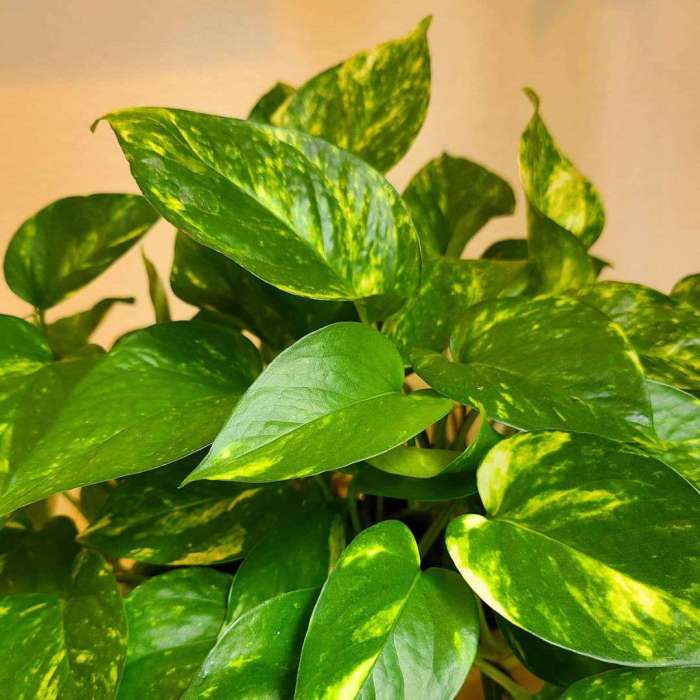
In conclusion, the hanging Chinese evergreen is a versatile and rewarding plant that adds beauty and freshness to any indoor space. Its air-purifying qualities, ease of care, and diverse applications make it an ideal choice for both novice and experienced gardeners.
Whether you’re looking to create a lush hanging garden or simply add a touch of greenery to your home, the hanging Chinese evergreen is an excellent option.
Quick FAQs
How often should I water my hanging Chinese evergreen?
Water your hanging Chinese evergreen when the top inch of soil feels dry to the touch. Avoid overwatering, as this can lead to root rot.
What type of light does a hanging Chinese evergreen need?
Hanging Chinese evergreens prefer bright, indirect light. They can tolerate low light conditions, but their growth may be stunted.
How do I propagate a hanging Chinese evergreen?
Hanging Chinese evergreens can be propagated by stem cuttings, air layering, or division. Stem cuttings are the easiest method and can be done at any time of year.